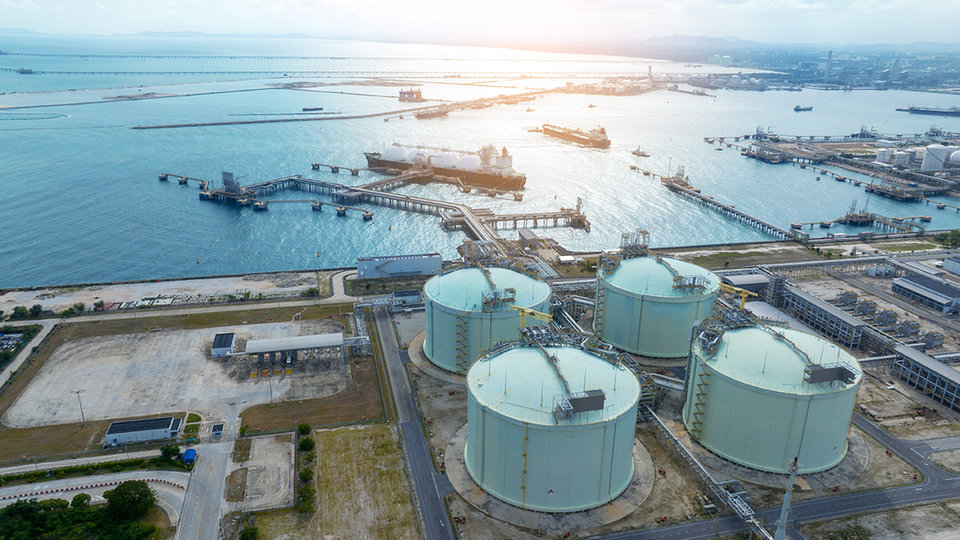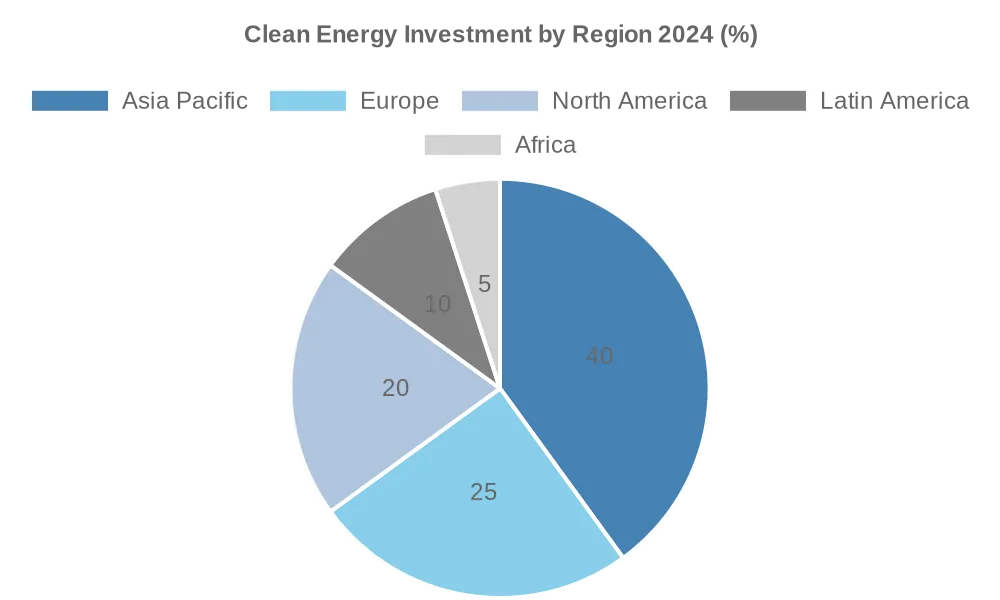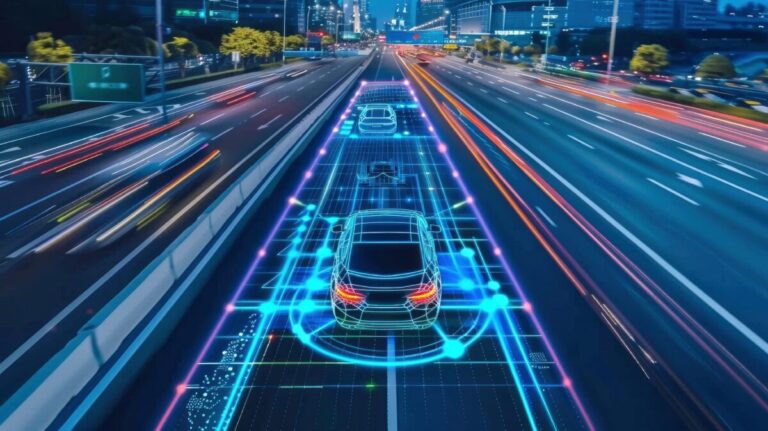
Context: Energy’s Transition to a Clean, Connected Era
The global Energy sector is at a pivotal juncture, where the race to net-zero, technological innovation, and geopolitical dynamics are redefining the energy landscape. Renewable energy capacity hit 4,500 gigawatts (GW) in 2024, projected to reach 5,000 GW by year-end—a 11% leap—spanning Asia’s solar surge, Europe’s wind dominance, and Africa’s green leap (IEA). This isn’t just growth; it’s a tectonic shift toward sustainability, electrification, and grid resilience, with stakeholders from Jakarta to Johannesburg demanding cleaner, smarter energy systems. For CEOs and boards of global energy firms, the directive is unmistakable: AI must underpin strategy development and business decisions to lead this transformation in energy sector. This report dissects the global currents from 2023 to early 2025, unpacks strategic imperatives, and charts an AI-driven path to power the future.
Macroeconomic and Commercial Landscape: A Global Energy Grid
The energy narrative from 2023 to 2025 is one of ambition and adaptation. Renewables soared—Asia-Pacific’s 2,000 GW in 2024 (led by China’s 1,200 GW) outpaced Europe’s 1,500 GW and North America’s 800 GW, while Africa’s 200 GW grew 20% annually (IEA). Clean energy investments hit $480 billion in 2024, projected at $500 billion for 2025, with Europe’s 35% share topping Asia’s 30% (IEA). Electrification accelerates—global EV charging points reached 25 million in 2024, up 30% from 2023, led by China’s 15 million (Department of Energy).
AI adoption spikes—60% of energy firms used it in 2024, up from 40% in 2023, optimizing grids and cutting costs 15% (Department of Energy). Policy shapes the pace—COP28’s 2030 tripling goal drove $100 billion in subsidies, while the EU’s Green Deal added $50 billion in 2024 (WEF). Macroeconomic flux persists—global inflation eased to 4% in Q1 2025 from 6% in 2023, but India’s 5.5% rate hikes solar costs, versus Germany’s 2.5% stability (IMF).
Supply chain strains linger—lithium costs rose 12% in 2024 due to South American droughts, while rare earth disruptions in China cut supply 10% (Deloitte). Geopolitical risks—US-China tensions spike battery tariffs 15%, while Africa’s $40 billion clean investment doubles from 2023—test resilience (IEA). Gen Z’s 70% demand for green energy in 2024—e.g., 40% of Brazil’s solar uptake—shifts priorities (IRENA).
Visuals illuminate the shift:


Strategic Implications: Powering a Dynamic Global Future
For energy leaders, these trends demand an AI-first response. Here’s the breakdown:
Key Insights & Trends:
Renewables’ 5,000 GW goal—Asia’s 40% versus Europe’s 30%—ties to solar and wind scale (IEA). Clean investment’s $500 billion leans on Europe’s $175 billion, while electrification’s 25 million charging points pivot on China’s 60% share (Department of Energy). AI’s 60% adoption—e.g., 15% cost cuts in India’s grids—drives efficiency. Gen Z’s 70% green push reshapes demand (WEF).
Key Risks:
Supply chain fragility—12% lithium cost hikes and 10% rare earth cuts threaten margins (Deloitte). Cybersecurity—50% of grids faced attacks in 2024, with Asia’s 20% spike—risks outages (IRENA). Economic volatility—India’s 5.5% inflation risks 10% solar price hikes, versus Germany’s 2% stability. Geopolitical flux—15% tariffs and $40 billion African shifts—add complexity (IEA).
Key Considerations:
AI must adapt—e.g., Africa’s off-grid focus versus Europe’s grid scale. Ethical AI—60% of consumers reject opaque energy data, up from 50% in 2023—is critical (Department of Energy). Talent lags—40% of staff are AI-fluent, with Africa at 30% (Deloitte). Balancing cost and green goals—e.g., India’s affordability versus Japan’s premium—is key.
Key Opportunities:
Emerging markets—Africa’s $40 billion clean energy and Southeast Asia’s $100 billion by 2027—beckon (WEF). AI-driven efficiency—e.g., 20% grid savings—wins globally. Energy storage—$50 billion in Europe—pairs with electrification. Decentralized grids in Africa could unlock $20 billion by 2027 (IEA).
Strategic Imperatives: The AI-Driven Blueprint
Energy leaders face a landscape where sustainability, efficiency, and growth intersect with escalating risks and opportunities. The following imperatives leverage AI in strategy development in energy to scale renewables, optimize grids, and tap emerging markets—each pivotal as the sector transitions to a greener, tech-driven future.
Scale Renewable Energy with AI Precision
The global push for renewables—driven by Asia’s dominance and Europe’s ambitious targets—marks a shift where scale and precision are paramount. AI anchors this transition by optimizing generation, forecasting weather patterns and energy demand to maximize output from solar and wind assets. In regions with volatile climates, this ensures reliability, addressing supply chain pressures like rising rare earth costs that threaten expansion.
Beyond operations, AI enhances strategic positioning. In mature markets, where carbon neutrality deadlines loom, AI aligns production with regulatory incentives, ensuring compliance while capitalizing on tax benefits. In emerging economies, it tailors renewable deployment—say, solar micro-grids for rural areas—meeting local needs amid inflationary pressures.
The argument is strategic: AI-driven strategy in energy industry isn’t just about efficiency—it’s about leading a market where sustainability dictates competitiveness, and hesitation risks ceding ground to faster movers
Optimize Grids Globally
Aging grids and rising renewable integration demand smarter management, especially as electrification grows in urbanizing regions like Africa. AI transforms this challenge by balancing supply and demand in real time—think adjusting loads during peak solar hours—reducing outages and waste. In markets with policy-driven renewable goals, this optimization ensures stability as intermittent sources scale.
The stakes extend to economics and resilience. With inflation moderating globally but still high in areas like Latin America, AI minimizes operational costs, a critical edge when rare earth price hikes strain budgets. In interconnected systems, it predicts stress points—say, from extreme weather—fortifying grids against disruptions. The discussion pivots on foresight: AI doesn’t just maintain grids—it reimagines them as dynamic assets, enabling leaders to meet rising demand while navigating a volatile cost landscape
Accelerate Electrification and Storage
Electrification’s rise—tied to transport and industry in Asia and beyond—pairs with storage growth, particularly in Africa’s expanding markets. AI accelerates this by optimizing battery deployment and charging networks, ensuring energy availability aligns with demand spikes, such as urban EV adoption. In regions with ambitious decarbonization targets, this drives progress without overwhelming infrastructure.
The opportunity is twofold: efficiency and scale. AI extends storage lifespan by managing charge cycles, a cost saver as supply chain risks push material prices upward. In emerging markets, it prioritizes electrification investments—say, off-grid solutions for remote areas—unlocking access while balancing inflationary pressures. The argument is clear: AI turns electrification and storage from technical challenges into strategic levers, positioning firms to lead a low-carbon transition profitably.
Fortify Cybersecurity Across Operations
As energy systems digitize—especially with smart grids and IoT—cybersecurity becomes a linchpin, with threats escalating in tandem with adoption. AI strengthens defenses by monitoring networks in real time, detecting anomalies—think unusual grid access patterns—before they escalate. In policy-heavy regions like Europe, this ensures compliance with stringent data rules, avoiding costly breaches. Resilience is the broader imperative. A cyberattack can disrupt power to millions, eroding trust in an industry under scrutiny for sustainability.
With economic pressures like inflation persisting, AI’s proactive strategy development—modeling risks and prioritizing defenses—saves resources versus reactive fixes in energy industry. The discussion centers on security as strategy: AI transforms cybersecurity from a liability into a competitive advantage, safeguarding operations in a tech-dependent future
Build an AI-Ready Global Workforce
AI’s pervasive adoption among energy firms exposes a workforce gap, with many teams unprepared for a digital-first era. AI itself bridges this by delivering tailored upskilling—think simulations for grid management or renewable forecasting—aligned with regional needs, from Europe’s regulatory focus to India’s efficiency gains. An AI-ready team enhances execution, critical as sustainability goals tighten. The cost of delay is steep.
In inflationary climates, AI upskilling offsets labor cost rises, while in growth markets, it drives operational scale. The argument is strategic: an AI-fluent workforce isn’t an add-on—it’s a necessity, ensuring firms capitalize on renewable and storage surges rather than lag behind. AI redefines talent, aligning it with a future where technology and green priorities converge
Tap Emerging Market Potential
Emerging markets—Africa’s electrification boom and Southeast Asia’s renewable push—offer vast potential amid urbanization and policy support. AI unlocks this by analyzing local demand—say, solar for off-grid communities—tailoring solutions to diverse needs. In regions with rising inflation, it ensures cost-effective deployment, maximizing returns on investment.
The approach is both opportunistic and precise. In Africa, AI can prioritize high-impact projects, meeting sustainability demands while navigating supply chain risks. In Asia, it scales digital energy platforms, aligning with policy incentives like subsidies. The discussion hinges on vision: AI strategy in energy industry doesn’t just tap markets—it shapes them, enabling firms to lead growth while competitors scramble to adapt
Conclusion and Call to Action
In developing AI strategy, NexStrat.AI offers a pathway to navigate complexity and drive growth. CEOs and boards are urged to:
- Assess current strategies using AI-driven insights.
- Analyze and refine strategic options with NexStrat.AI’s collaborative tools.
- Mitigate risks proactively through AI powered analysis.
- Build an execution roadmap, ensuring alignment with global trends and local priorities.
Book a demo at NexStrat.AI demo to explore how NexStrat.AI can transform your strategy development.
About NexStrat AI:
NexStrat AI is at the forefront of AI and business strategy innovation. As the ultimate strategy and transformation AI co-pilot and platform, we help leaders and strategists craft winning strategies and make effective decisions with speed and confidence.
Contact Us:
Have questions or want to learn more? Contact us at [email protected]
Follow Us:
Join our community of forward-thinking business leaders on LinkedIn.

